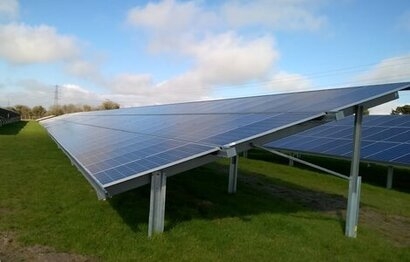
The 94-acre site in Alfreton is located on low-grade grazing land and will generate enough green electricity to power 5,000 homes, while saving over 4,000 tonnes of carbon dioxide emissions per annum. Its construction is expected to take around 27 weeks.
The site will benefit from advanced biodiversity improvements designed to create habitats that support local wildlife and some of the country’s most at-risk species. These improvements are expected to deliver a 16 percent biodiversity net gain and will include the planting of a tree and hedgerows and the installation of bat and bird boxes around the site.
Once complete, the solar farm will be operational for 40 years, after which time the panels and infrastructure will be removed and the land returned to agricultural use.
“Solar power has a vital role to play if we are to achieve the UK’s target of net zero carbon emissions by 2030” said Mark Futyan, Anesco CEO. “The solar farm in Alfreton will not only advance this commitment but support the local authority in reaching its own goal of becoming carbon neutral within the same timeframe. From renewable asset design and development, through to construction, maintenance and revenue optimisation, our experienced team at Anesco is proud to be accelerating the UK’s transition to a low carbon energy network.”
The site was introduced to Anesco by Carter Jonas, who act for the landowner on renewables schemes.
“Having been involved with this project from its inception we are extremely pleased to have reached this milestone” added Helen Melling, Senior Energy Specialist at Carter Jonas. “Successfully securing planning approval is a testament to the collaboration between all parties in unlocking the potential of the site. At a time when renewable power sources are needed more than ever, we look forward to helping progress this scheme to its next stage.”
Anesco has more than 430 MW of new solar and storage projects in planning or at the ready to build stage, with a total pipeline exceeding 2 GW, while its O&M team is managing more than 1.1 GW of renewable energy assets.
For additional information:

